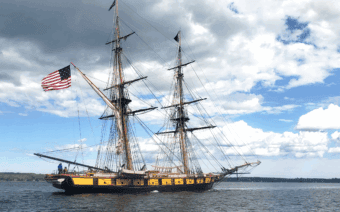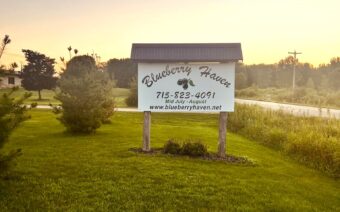November 17, 2022
Life before and after March 2020 isn’t the same.
While much of the world has now gone back to “normal,” some things still feel foreign, unfamiliar or just different than before.
When the world came to a halt because of the COVID-19 pandemic, events, parties and get-togethers were canceled or moved online for much of the next two years.
As in-person events continue to return, many of the “traditional” pre-pandemic mainstays of event promotion feel forgotten.
Organizers not sharing details about where to park or purchase tickets, not posting about the event on social media or forgetting to update the website are among the often overlooked, but important, items.
Whether your business or organization is hosting a fundraiser, groundbreaking, ribbon cutting or award ceremony – large or small – the basics for event promotion remain the same: answer the five W’s and how to get people there.
This may not mean what you think, so let’s explore what this entails to have a successful event.
The who
Even if you’re holding a long-running event, it’s important to remind the audience who your organization is, what you do and why you’re holding this event.
This is especially important if you’re hosting a fundraiser or an event open to the public.
This can easily get overlooked because sharing event details are top of mind, so take a step back and ask, “What should the public know about my organization?”
“Who” also includes knowing your target audience.
Are they your clients, customers, employees, stakeholders, neighbors, friends or general public among many other populations?
Do you already have their contact information to invite them, or will you use another form of communication to get the news out?
Knowing who the audience is and how to reach them will make the rest of these questions easier to answer.
What now?
Answering what your event is and what the attendees can expect will be the ticket to getting people to attend because this is the bulk of the information you’ll be sharing.
This includes what will be happening at your event, such as performers, guest speakers, musicians, if food will be served, silent auction and raffles, ticket information and even dress code.
This category is open-ended and depends on the event, but encompasses the information that makes your event unique, interesting and one people want to attend.
Where and when?
Don’t expect attendees unless you give them the details of where to go.
Yes, sometimes big details like where the event is taking place, and the date and time get forgotten or miscommunicated.
These details are vital to event success, but so are details in the COVID-era, such as if the event is virtual, in-person, or both.
If the event is online, communicate if the URL or meeting invite will be shared upon registration or just prior to the event.
In-person activities should also indicate parking information.
This category also means knowing when and where to share this information, bringing us back to “the who.”
If you know your audience and where best to reach them, that will point you in the right direction.
Community calendars are a great resource, as well as news media, message boards, newsletters and niche social media groups.
Events can take months to plan and organize, so incorporating communication into the planning, timeline and lead-up, is essential.
But why?
Similar to answering what your event is about, is sharing why your event matters, how it differs from other events and why your cause should matter to the target audience.
Plain and simple, sharing a human angle in the communication and marketing materials will explain why your event is worthy of attending.
How do you get there?
Once you can answer the five W’s, you can start promoting your event.
While not every detail can be lined up before promotion, having the core items ready will make your job easier and clarify guests’ expectations.
Since you’ve already defined your target audience and which avenues you’ll use to communicate, start distributing announcements, invitations or save-the-dates based on your timeline with more details shared as the event approaches.
Whether you promote with flyers, advertisements, a news release, on websites or other forms of marketing materials, stick to sharing this core information first, without a lot of extra “fluff.”
?Sharing information, the public needs to know, getting to the heart of the matter succinctly and creatively is key to getting people excited to attend.
Regardless of the type of event, you’ll want guests to come away from it with a memorable experience, having learned something, a positive networking experience or enjoyed a good meal; not angry or misinformed about what was taking place.
Using the outreach tools that are right for your brand and for reaching your audience will get your event in front of the right people, setting the stage for a great event.
Allison Barnes is an account executive at Leonard & Finco Public Relations.
 Ushering the next generation into the healthcare pipeline
Ushering the next generation into the healthcare pipeline CEO of Menomonie chamber selected for U.S. Chamber Fellowship
CEO of Menomonie chamber selected for U.S. Chamber Fellowship








